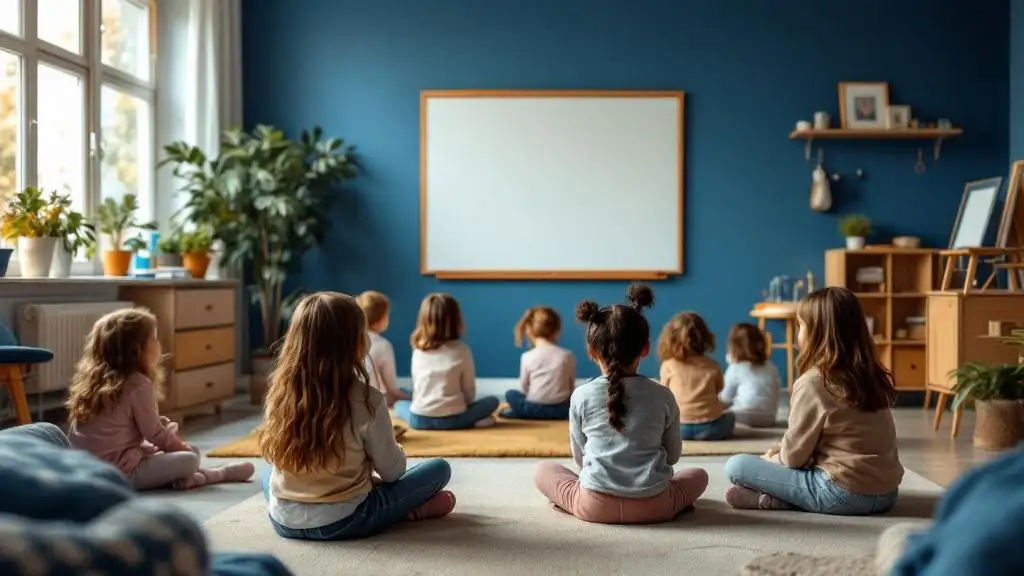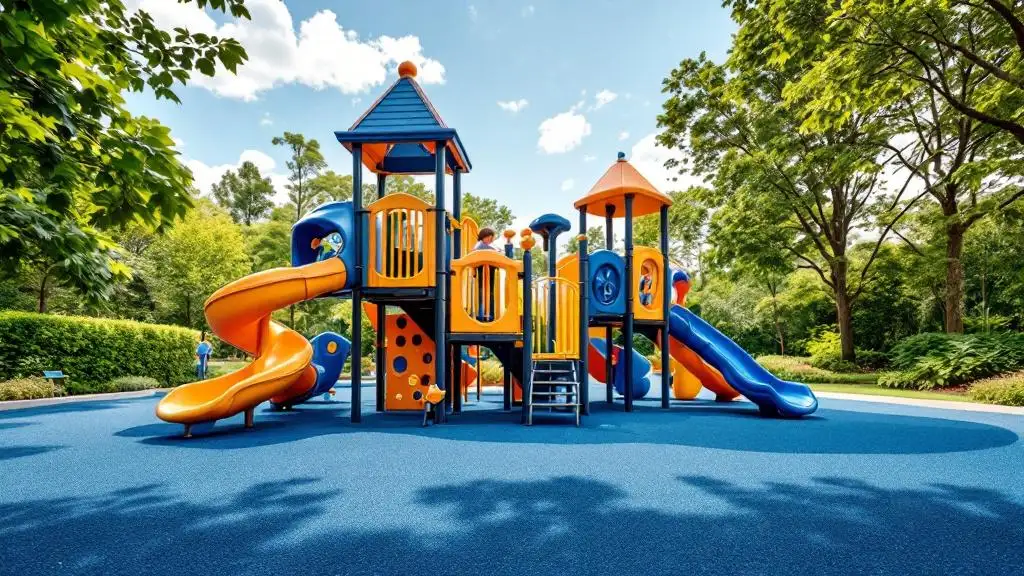
Understanding Childhood Apraxia of Speech (CAS)
Childhood Apraxia of Speech (CAS) is a neurological motor speech disorder affecting how children plan and execute the movements necessary for speech. Despite understanding what they want to communicate, children with CAS encounter significant challenges in producing clear, consistent speech due to disruptions in the brain’s ability to send precise signals to speech muscles. Recognizing the defining symptoms, causes, and diagnostic procedures is crucial for early intervention and effective therapy planning.
What Is Childhood Apraxia of Speech?
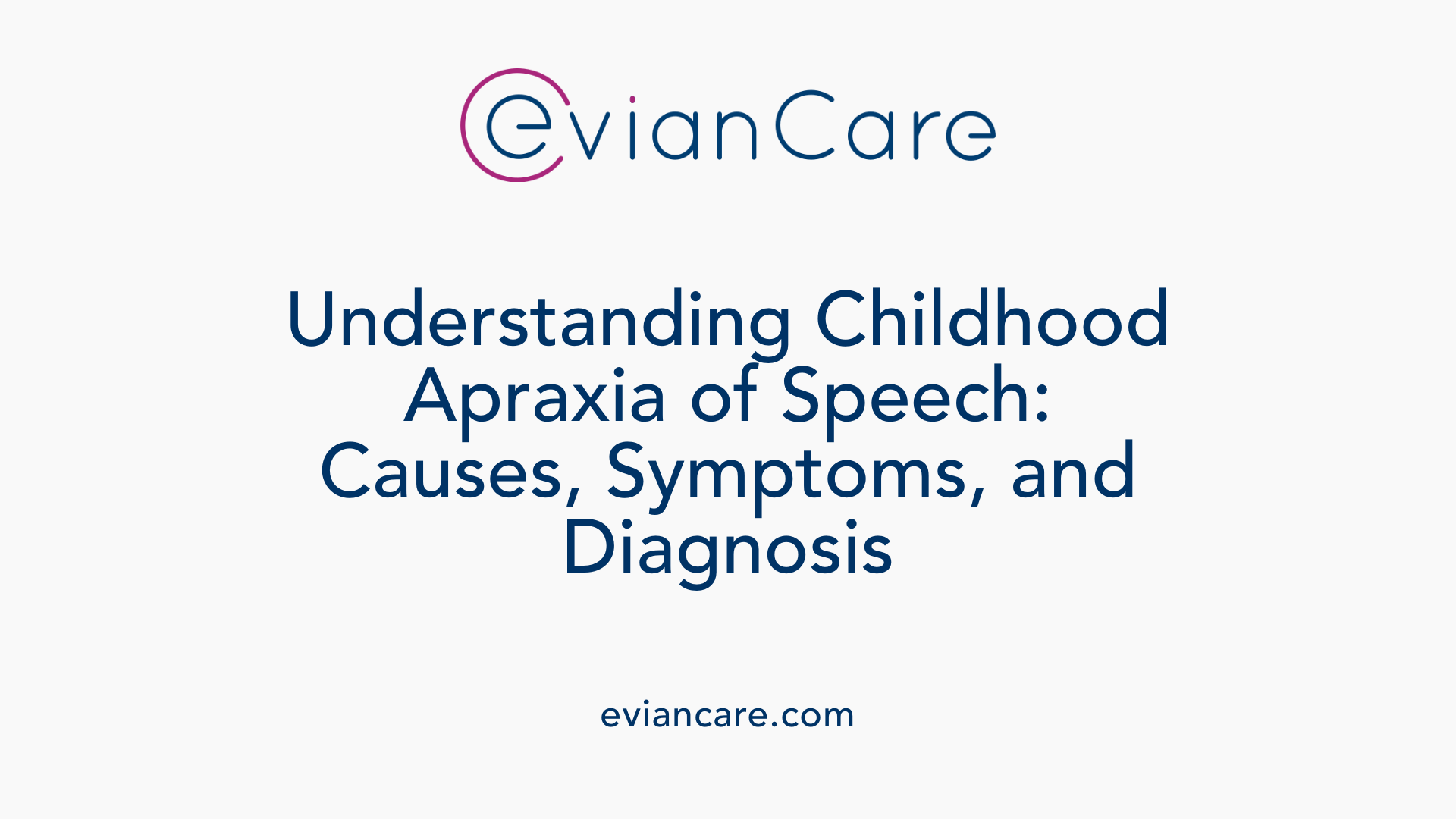
Definition of CAS
Childhood apraxia of speech (CAS) is a neurological speech disorder in which children have difficulty planning and coordinating the precise movements of the mouth, lips, and tongue needed for speech. Despite understanding what they want to say and having functioning speech muscles, children with CAS struggle to execute these movements smoothly and consistently. This disorder, also known as developmental verbal dyspraxia, affects about 1 to 2 children out of every 1,000, making it relatively rare. It is characterized by inconsistent speech errors, difficulty transitioning between sounds, and abnormal rhythm and prosody, which can make children hard to understand.
Causes of CAS
The exact cause of CAS remains largely unknown, but it often involves interruptions in the nerve pathways between the brain's speech centers and the muscles used for speech. These disruptions can be due to brain damage, genetic factors, or neurodevelopmental disorders. Some children inherit mutations in genes like FOXP2, which is linked to speech and language development. Brain injuries, such as stroke, infections, or trauma occurring before or after birth, can also contribute to the disorder.
While in many cases, no specific cause is identified, CAS can also be associated with broader neurological or genetic conditions like Down syndrome, cerebral palsy, epilepsy, or mitochondrial disorders. Children with a family history of communication or learning disabilities are at higher risk of developing CAS.
Symptoms of CAS
Children with CAS often show signs from an early age, with symptoms that include:
- Limited babbling or vocalizations between 7 to 12 months.
- Delayed onset of first words, usually after 12 months.
- Inconsistent pronunciation of words and sounds.
- Trouble moving smoothly from one sound or syllable to another.
- Groping or searching movements with the mouth.
- Simplified or distorted speech patterns, often with vowel and consonant errors.
- Reduced speech intelligibility, especially in older children.
- Difficulty with multisyllabic words and complex speech sequences.
- Additional issues may include delayed language development, problems with reading and writing, and frustration with communication.
Diagnosis process
Diagnosing CAS involves a comprehensive evaluation performed by a licensed speech-language pathologist (SLP). Since there are no medical tests for CAS, diagnosis depends on detailed assessments of speech and oral-motor skills, linguistic abilities, and developmental history.
The evaluation process typically includes:
- Observation of speech production in various contexts.
- Standardized speech and language tests focusing on speech sound errors, consistency, and rhythm.
- Oral-motor assessments to evaluate muscle movements involved in speech.
- Dynamic assessment techniques to analyze how children learn and adapt to speech tasks.
- Review of medical history, including any neurological or genetic factors.
In some cases, additional tests such as hearing tests or genetic screening may be conducted to rule out other causes. Early and accurate diagnosis is essential because CAS requires specialized intervention focused on speech motor planning and programming, rather than traditional speech therapy approaches used for typical speech delays.
Early Signs and Indicators of CAS
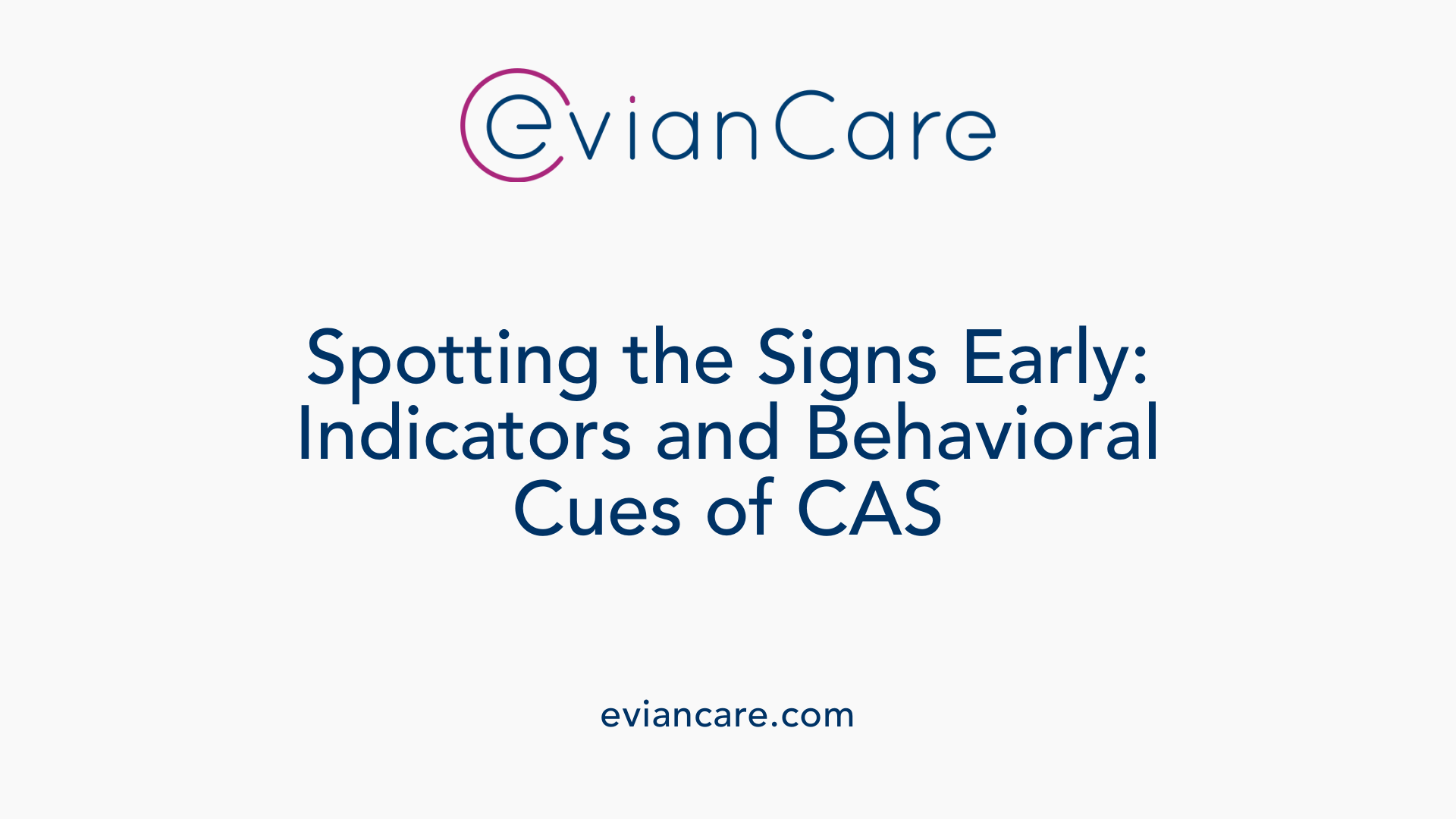
Initial signs in infants and toddlers
Children with childhood apraxia of speech (CAS) often show subtle early signs that may be overlooked. Typically, these signs appear from the age of 7 months onward. One of the earliest indicators is limited vocalization or babbling. Instead of the typical variety of sounds, infants with CAS may produce fewer vocal sounds and less varied babbling than their peers. Around 12 to 18 months, these children often experience a delay in saying their first words. When they do speak, their vocabulary development is often slower, and their speech may be hard to understand.
Progression of symptoms
As children grow, the symptoms of CAS tend to become more noticeable. They may produce inconsistent speech errors, meaning the same word or sound may come out differently each time they attempt to speak. Vowel distortions are common, and children might struggle with smoothly transitioning from one sound or syllable to another, creating a choppy speech pattern. Such disruptions can affect intelligibility, making it difficult for others to understand their speech.
Older children may exhibit difficulty with speech timing and rhythm, with frequent pauses between sounds, syllables, or words. They might omit parts of words or leave sounds out entirely, resulting in fragmented speech. These children also often show signs of oral motor struggles, such as difficulty controlling their mouth muscles, which can contribute to their speech challenges.
Behavioral cues for early detection
Parents and caregivers may notice behavioral cues that suggest early points of concern. Children with CAS may seem to know what they want to say but have trouble getting the words out. They may display frustration or become upset when unable to communicate effectively. During play, they might show limited vocal exploration and avoid trying to imitate sounds or words.
Another important cue is the inconsistency in speech production. The same word may vary each time the child attempts to say it, demonstrating instability in speech planning and programming. Speech may also appear robotic—lacking natural prosody, stress, or intonation—which can be a warning sign.
In addition to speech difficulties, children with early CAS signs may also experience delays in related language skills, such as vocabulary growth, reading, and spelling. They might also show signs of frustration or fatigue when trying to speak.
Early detection of these signs relies heavily on attentive observation by parents, caregivers, and pediatric professionals. Recognizing these early indicators is crucial because prompt intervention through specialized speech therapy can significantly improve communication outcomes for children with CAS.
Therapeutic Approaches and Techniques
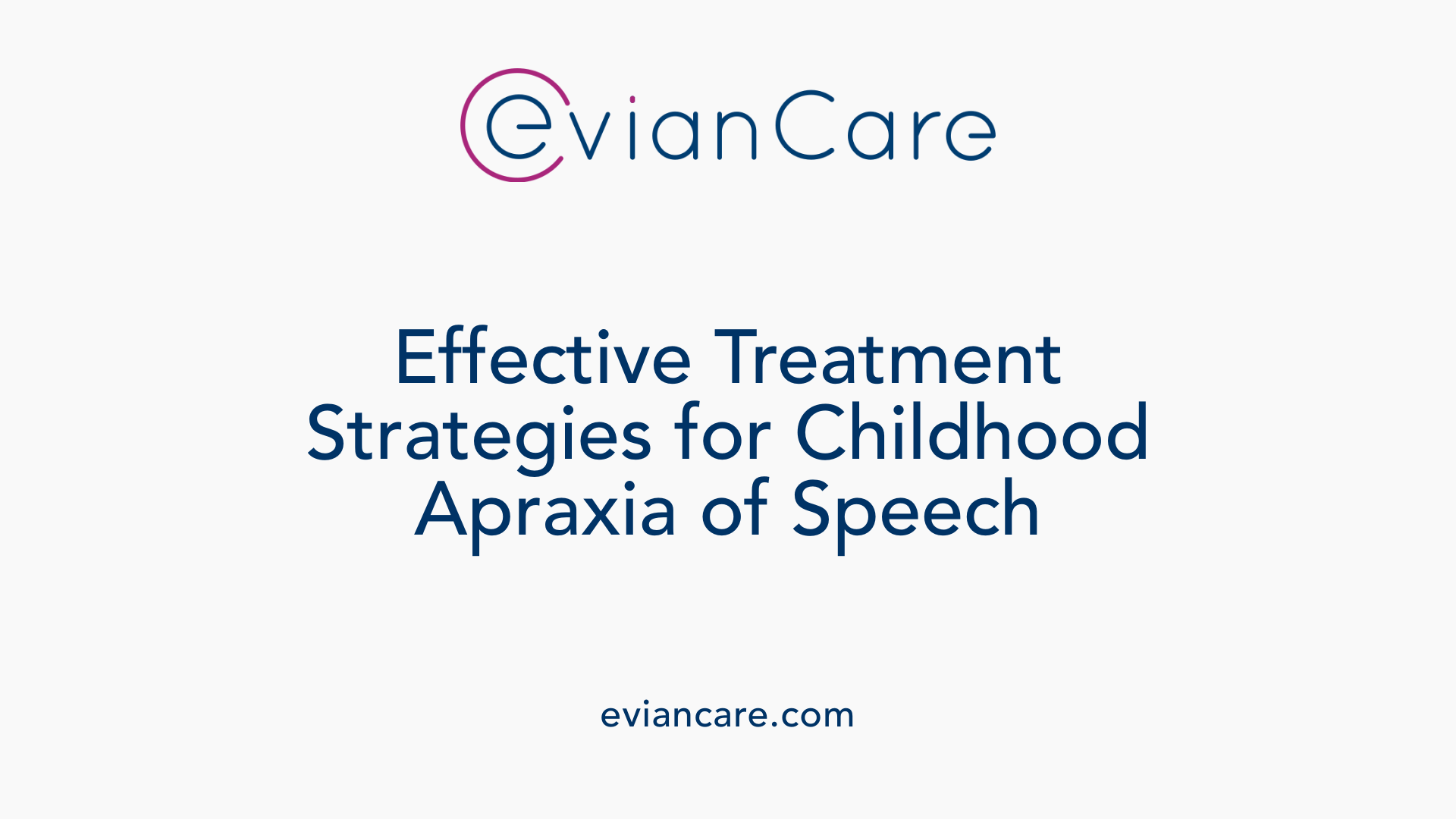
What treatment options and therapy methods are available for childhood apraxia of speech?
Children with childhood apraxia of speech (CAS) benefit from specialized, targeted speech therapy conducted by trained speech-language pathologists (SLPs). The core goal of therapy is to improve motor planning and the sequencing of speech movements. One of the most well-supported approaches is Dynamic Temporal and Tactile Cueing (DTTC), which uses repetition, movement practice, and tactile cues to help children develop more accurate speech production.
Therapy sessions are typically intensive, often occurring three to five times a week, especially in the early stages. During these sessions, children practice syllables, words, and phrases emphasizing movement patterns rather than isolated sounds alone. This practice is based on motor learning principles, with frequent feedback, cues, and gradual fading of prompts as speech improves.
In addition to direct speech therapy, augmentative and alternative communication (AAC) tools—such as sign language, picture boards, or speech-generating devices—are often introduced early to ensure children can communicate effectively while their speech develops. Family involvement and consistent home practice are vital for reinforcing skills gained during therapy.
Beyond speech sound production, therapy may also address coexisting motor or language issues to support overall communication development. The combination of these approaches, adapted to each child's severity and learning style, provides the best chance for meaningful progress.
Supporting Children and Family Involvement
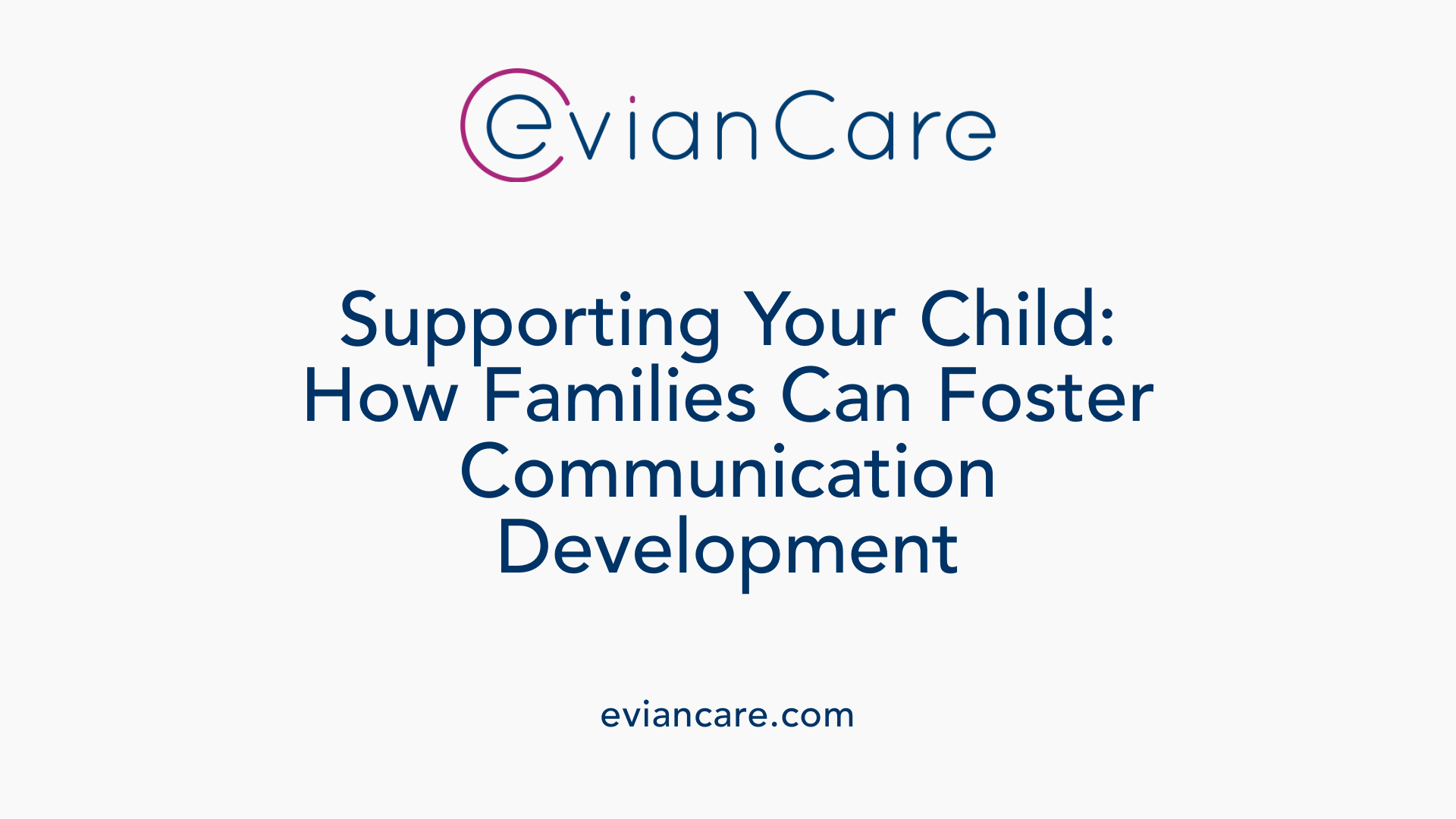
How can parents and caregivers support children with apraxia of speech?
Parents and caregivers play a crucial role in the progress of children with apraxia of speech (CAS). Effective support begins with engaging in regular, short, and enjoyable practice routines at home. These sessions should focus on practicing sounds, syllables, and simple words, guided by the plans and recommendations of the child's speech-language pathologist (SLP). Success in therapy often hinges on consistency and creating a positive, encouraging environment.
To facilitate communication, families should incorporate alternative methods like gestures, sign language, or augmentative and alternative communication (AAC) devices if speech is limited. Using these tools supports expression and helps maintain motivation even when spoken words are challenging. Reinforcing strategies learned during formal therapy ensures that the child receives consistent practice and understands that communication is valued.
Close collaboration with trained SLPs is essential. Parents should follow the tailored exercises and techniques such as speech drills and movement exercises recommended by the therapists. These might be scheduled as daily routines or integrated into playtime activities, making therapy natural and less intrusive.
Encouragement and positive feedback are powerful. Celebrating small successes and correcting errors gently can boost a child's confidence. It’s important for families to remain patient and supportive, understanding that progress may be gradual.
Additionally, staying informed about CAS and its challenges empowers families to provide better support. Accessing reliable resources, participating in support groups, and attending educational events offered by organizations dedicated to childhood apraxia of speech can enhance understanding. Foundations often host webinars and offer materials that help parents advocate for their child's needs.
Support networks and community involvement can reduce feelings of frustration and isolation. Connecting with other families facing similar challenges provides emotional comfort and practical advice.
Home Practice Routines
Establishing a predictable routine helps children anticipate and prepare for speech practice. Short, frequent sessions—around 10-15 minutes—are generally more effective than lengthy, infrequent ones. Incorporate games, storytelling, and crafts that involve repetition of targeted sounds and words.
Use of Alternative Communication Methods
Offer sign language stickers, picture boards, or electronic devices that produce spoken words. These tools ensure children can communicate needs and ideas, which maintains motivation and reduces frustration.
Building Confidence and Motivation
Focus on enjoyable activities that promote success, such as singing songs, playing with animals or action figures, and engaging in activities that involve imitation. Celebrate any attempt at speech, no matter how small, and encourage persistence.
Resources and Support Networks
Numerous organizations and foundations provide valuable information, therapy directories, and support groups. These resources keep families connected, informed, and empowered to advocate for their child's progress.
| Support Activities | Tools/Resources | Goals | Common Challenges |
|---|---|---|---|
| Practice speech sounds | Flashcards, apps | Improve speech motor skills | Frustration and fatigue |
| Alternative communication | Sign language, AAC devices | Foster expression | Limited speech output |
| Confidence-building games | Singing, storytelling | Boost motivation | Maintaining persistence |
| Educational webinars | Foundation events | Educate families | Keeping up-to-date |
Resources and Research on CAS

What are the available resources for finding qualified speech therapists and support services for children with apraxia of speech?
Parents and caregivers seeking specialized support for children with childhood apraxia of speech (CAS) have access to various valuable resources. One of the most trusted options is the national directories maintained by reputable organizations, which list licensed and experienced speech-language pathologists (SLPs) trained in CAS diagnosis and treatment. The American Speech-Language-Hearing Association (ASHA) offers the ProFind tool, an extensive directory enabling families to locate certified professionals within their geographic area. To ensure quality care, SLPs listed in these directories often meet specific criteria, including specialized training in CAS, ongoing continuing education, and experience with motor speech disorders.
Local university speech therapy clinics also serve as excellent support centers. These clinics often provide access to advanced diagnostic tools and specialized therapy programs, often at reduced costs. Additionally, teletherapy options have expanded in recent years, allowing families to connect with qualified SLPs remotely, broadening access to expert care regardless of location.
Support organizations and foundations dedicated to CAS play a crucial role in providing resources, guidance, and advocacy. Organizations such as the Once Upon a Time Foundation offer online directories, professional training resources, and support groups for families. They also facilitate connections to local therapists and clinics specializing in CAS.
Parents are encouraged to verify the credentials and specialties of therapists before starting treatment. Attending informational webinars, workshops, and support group meetings can also help families better understand available services and connect with a community of support.
Are there evidence-based practices and recent research on speech therapy for children with apraxia of speech?
The field of speech therapy for CAS has seen significant advancements, with an increasing emphasis on evidence-based practices backed by rigorous research. Treatments such as Dynamic Temporal and Tactile Cueing (DTTC) have gained widespread recognition due to their strong empirical support. DTTC focuses on motor learning principles, using repetitive practice, multisensory cues, and motivation to improve speech motor planning.
Other approaches like the Nuffield Dyspraxia Program (NDP3) and the Speech-to-Speech Protocol (ReST) are also extensively studied and shown to be effective. These therapies balance motor repetition with linguistic and prosodic features of speech, targeting both sound production and naturalness.
Recent research efforts include randomized controlled trials and comparative effectiveness studies that evaluate the benefits of different therapy modalities. These studies emphasize the importance of treatment intensity—often recommending daily sessions or focused practice over several months—and personalized interventions aligned with each child's unique profile.
Neurobiological research is opening new avenues for understanding the underlying mechanisms of CAS, including genetic studies and neuroimaging. These advances are improving diagnosis accuracy and enabling more tailored treatment plans. Overall, current evidence supports a comprehensive, motor-based approach complemented by family involvement, frequent practice, and multisensory cues to optimize speech outcomes.
While research continues to evolve, treatment guidelines now strongly endorse approaches like DTTC and NDP3, which are validated through multiple studies for their effectiveness in helping children develop clearer, more functional speech.
Conclusion and Future Directions
Importance of early diagnosis and intervention
Early recognition of childhood apraxia of speech (CAS) is crucial for achieving the best possible outcomes. When CAS is diagnosed promptly, speech therapists can begin targeted intervention strategies that focus on improving motor planning and programming for speech. Early therapy helps children develop clearer speech patterns, build confidence, and reduce frustration. Delays in diagnosis often lead to more complex challenges later, including literacy difficulties and social communication issues. Family involvement from the outset reinforces progress and supports a more positive developmental trajectory.
Ongoing research and innovation
Research in CAS continues to evolve, with new techniques and evidence-based approaches improving treatment effectiveness. Innovative methods like the Dynamic Temporal and Tactile Cueing (DTTC) are gaining traction, aiming to optimize motor learning principles. Studies are investigating genetic factors, such as changes in the FOXP2 gene, to better understand the neurological underpinnings of CAS. Advances in neuroimaging are providing insights into how the brain reorganizes during therapy. Furthermore, technology-assisted interventions, including apps and speech-generating devices, are expanding the toolkit for clinicians and families. The goal is to tailor treatments that are more engaging and personalized, promoting better adherence and outcomes.
The role of family and community support
Support from families and communities plays a vital role in managing CAS. Engaged parents who practice speech activities at home, collaborate with therapists, and advocate for their children contribute significantly to therapy success. Community programs and support groups offer guidance, encouragement, and shared resources, reducing feelings of isolation. Schools equipped with specialized strategies and trained personnel help sustain progress in educational settings. As research advances, integrating family and community efforts with cutting-edge treatment approaches will be essential in maximizing the potential for children with CAS to develop functional and confident communication skills.
Future outlook for children with CAS receiving proper care
With early diagnosis and specialized, intensive therapy, children with CAS have a promising outlook. Many improve over time, gaining the ability to speak more clearly and communicate effectively. Long-term support and continuous adaptation of therapy approaches foster substantial progress. Ongoing studies aim to refine techniques further, making therapies more effective and accessible. Support systems involving family, educators, and healthcare professionals help create a nurturing environment for growth. Although CAS may be a lifelong condition in some cases, targeted interventions can enable children to participate fully in social, academic, and personal aspects of life.
| Aspect | Current Status | Future Prospects | Additional Notes |
|---|---|---|---|
| Diagnosis | Primarily through speech-language evaluation | Genetic and neuroimaging research | Emphasis on early detection |
| Therapy Techniques | Repetition, motor planning, cueing | Use of technology, personalized approaches | Focus on motivation and family involvement |
| Outcomes | Improved speech intelligibility | Enhanced methods for long-term progress | Community and family support remain central |
| Research Focus | Motor learning, genetic links, neuroplasticity | Advanced interventions and multidisciplinary models | Consideration of co-existing conditions |
This evolving landscape underscores the importance of comprehensive, early, and continuous support for children with CAS. Innovations promise to improve quality of life and communication skills, opening new opportunities for social participation and academic achievement.
Empowering Families and Enhancing Outcomes
While childhood apraxia of speech presents significant challenges, advances in speech therapy methods, early diagnosis, and family involvement greatly improve the prospects for children affected by this disorder. Continued research and technological innovations are expected to yield more personalized and effective interventions, helping children reach their full communication potential. Support networks and resources play a crucial role in guiding families through diagnosis, therapy, and ongoing support, ensuring that each child receives the tailored care necessary for progress and confidence in communication.
References
- Childhood Apraxia of Speech - ASHA
- What makes Speech Therapy Different for Children with Apraxia?
- Childhood apraxia of speech - Diagnosis and treatment - Mayo Clinic
- Child Apraxia Treatment – Providing free resources to both parents ...
- Apraxia Kids: Home
- Childhood Apraxia of Speech (CAS): Symptoms & Treatment
- Kids Health Info : Childhood Apraxia of Speech
- 7 Best Exercises, Games & Activities for Childhood Apraxia of Speech




